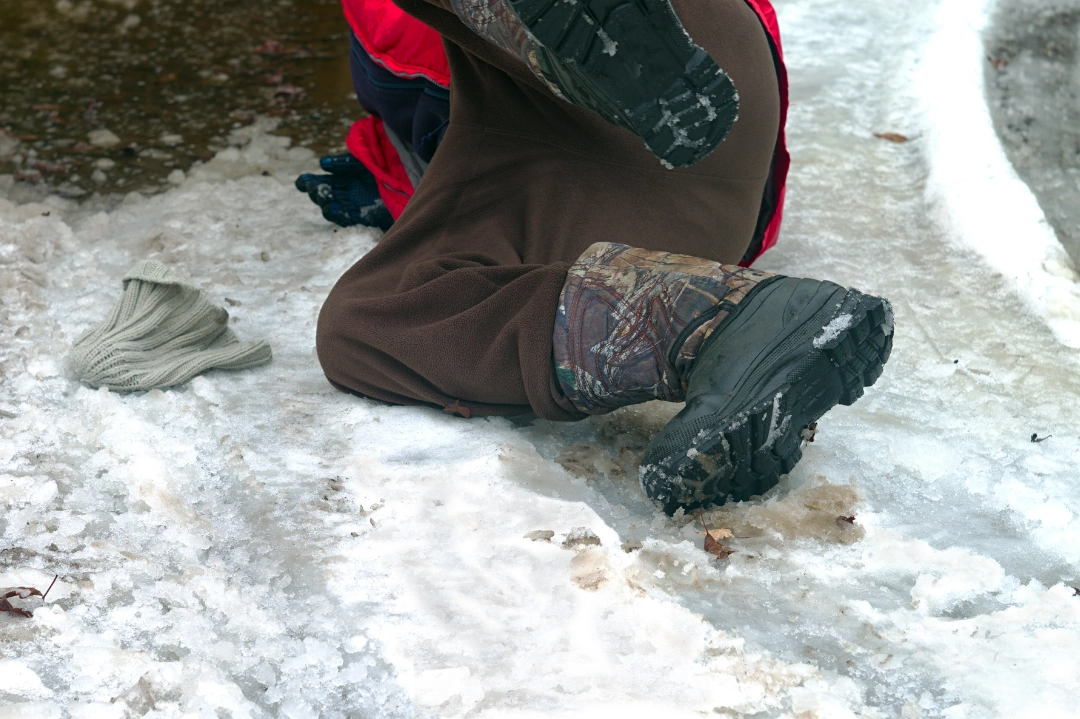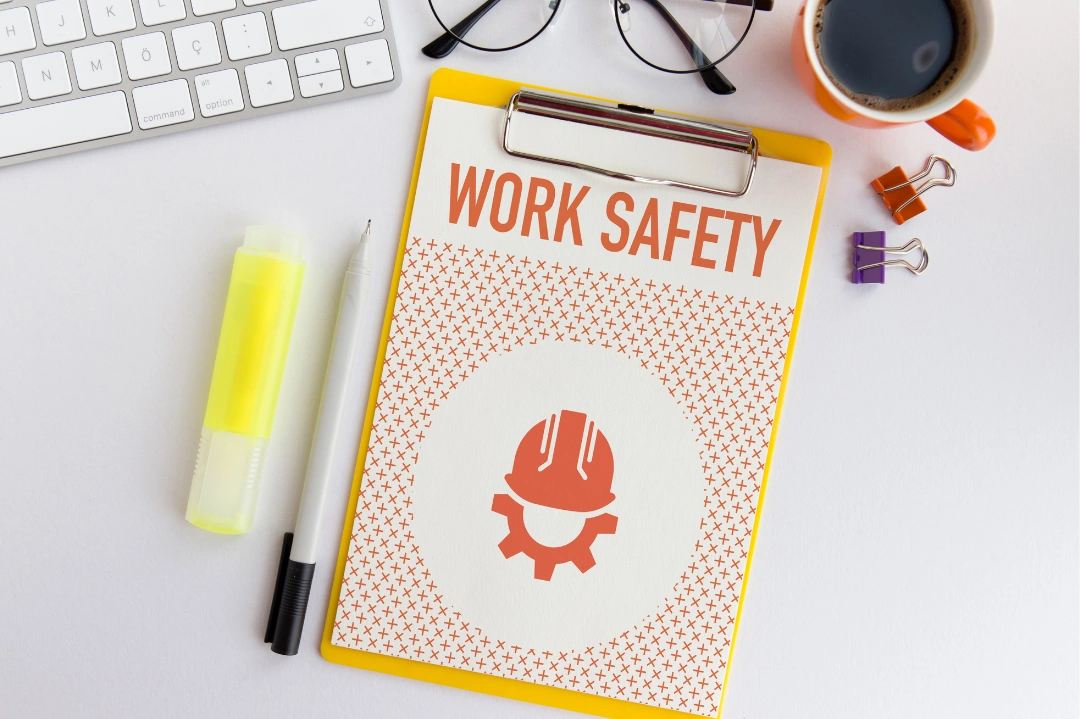
The Dangers Of Black Ice In The Workplace
Black ice is a hidden workplace hazard that can catch even the most vigilant lone workers off guard. This invisible layer of ice forms on roads and walkways, making it a significant risk during the winter months. Employers must understand the dangers of black ice to prevent accidents and protect workers. Discover the risks of black ice and explore strategies to manage this hazard, so lone workers are safe during icy conditions.
What Is Black Ice?
Black ice is an almost invisible layer of ice that forms on roads and walkways, creating serious safety hazards. Unlike typical ice, it blends seamlessly with the pavement, often looking like a harmless wet spot. This makes it particularly risky for lone workers who lack colleagues nearby to warn them.
Black ice tends to form when the air hovers around freezing, but the ground is colder. It often appears in the early morning or late evening when temperatures dip, or in shaded areas where the sun can't melt it away. Rain falling on a cold surface can also freeze quickly, adding to the risk. Because black ice is so hard to spot, it often leads to slips, falls, and even vehicle accidents before anyone realizes it's there.
Employers who manage lone workers must understand how black ice forms so they can keep everyone safe. Recognizing the conditions that lead to its appearance allows for better preparation and safety measures against this hidden threat.
The Dangers Of Black Ice As A Workplace Hazard
Black ice poses significant risks, especially for lone workers who lack immediate support. The primary hazard is its potential to cause common workplace accidents such as slips and falls, resulting in injuries ranging from minor bruises to more severe conditions requiring medical attention. These incidents can be particularly hazardous for lone workers who usually spend most of their time in isolated work environments.
Workplace safety data consistently show that slips, trips, and falls are major contributors to workplace injuries, with icy conditions being a key factor during colder months. While specific statistics on black ice incidents may vary, the consensus is clear: taking proactive steps can significantly reduce the chances of accidents.
The consequences of accidents extend beyond physical injuries. They can lead to increased liability for employers, resulting in financial damage and negative impacts on their reputation. Even worse, when a lone worker is incapacitated, it can disrupt operations and lead to delays, especially in industries that rely on quick turnaround times. Employers must recognize these risks and take comprehensive measures to mitigate them, ensuring the safety and well-being of their workforce.
Identifying Black Ice: Tips For Lone Workers
Lone workers must learn how to identify black ice, especially when they’re working in solitary environments. Black ice can be tricky to detect, often appearing as a wet patch rather than the frosty surface you'd expect. It tends to form in shaded areas, under bridges, or on roads that appear wet but are actually frozen.
Weather conditions offer important clues. When temperatures hover around freezing, especially in the early morning or late evening, black ice is more likely to form. Recent rain followed by a cold snap is another red flag for potential ice.
For safety purposes, lone workers should tread carefully, testing surfaces with a foot before fully committing their weight. Proper footwear with good traction is essential, and ice grips provide added stability on slippery surfaces.
Lone workers should also be aware of environmental cues, like a sudden drop in temperature or the presence of frost on nearby surfaces. This can indicate the potential for black ice.
Strategies For Managing Black Ice Hazards
Employers must adopt a proactive approach to managing black ice. The best strategy is to stay updated on weather conditions. By monitoring forecasts, employers can adjust work plans. This might involve delaying non-essential tasks or rerouting workers to avoid icy areas.
It’s also wise to equip workers with the right gear. Shoes with strong traction, along with tools such as ice grips or cleats, can greatly help prevent slips and falls. Regular training sessions should cover topics including how to spot black ice, the conditions that lead to its formation, and safe walking techniques. Encouraging workers to report hazardous conditions promptly enables swift action to address risks.
Employers should also provide accessible resources that offer practical advice on navigating icy areas. These guides should emphasize the importance of moving slowly and steadily and include tips on minimizing injury in the event of a fall.
By focusing on these strategies, employers can better protect lone workers from the dangers of black ice and reduce the likelihood of accidents, helping maintain a safe work environment.
Emergency Preparedness And Response
Employers should develop an effective emergency response plan to handle situations involving black ice. This includes equipping lone workers with reliable communication tools, enabling them to call for help. The plan should outline steps for evaluating the situation, contacting emergency services, and administering first aid if needed.
In addition to an emergency plan, it’s wise to have clear communication protocols, especially for people working in remote areas. Regular check-ins, whether through phone calls or digital platforms, help confirm the safety of employees. When an accident happens, a well-defined incident reporting process ensures a swift response, which can reduce the severity of any injuries.
Leveraging Technology For Safety
Technology significantly boosts the safety of lone workers in icy conditions. Employers can use weather monitoring apps to provide real-time updates on temperature changes and potential ice formation and alert workers to take necessary precautions.
GPS devices can track the locations of lone workers, enabling quick location in emergencies. Reliable communication devices are also an effective tool that allows workers to stay connected with supervisors and report hazardous conditions quickly.
Conclusion
Employers who manage the risks of black ice can effectively ensure the safety of lone workers at their worksites. By adopting proactive strategies, such as monitoring weather, providing suitable gear, and leveraging technology, employers can significantly reduce accident risks. A well-prepared emergency response plan further enhances safety and ensures timely assistance for workers when needed.
Employers should implement these strategies to safeguard their lone workers, which creates a safer work environment. By focusing on safety and remaining alert to the dangers of black ice, organizations can minimize risks and maintain productivity, even during challenging winter months.
Read More From the Lone Worker Blog
Environmental Health And Safety And Your Business

Employee safety is the biggest priority for businesses across the country, but how do you ensure that operations are safe and secure? Environmental Health and Safety (EHS) is a key component in addressing this challenge, focusing on protecting the environment and employee well-being.
Read MoreHow The Buddy System Can Keep Your Workers Safe

Keeping workers safe is a top priority, especially for those who perform their duties alone. Working without direct supervision brings added risk, whether in construction, home healthcare, maintenance, or remote fieldwork. That’s where the buddy system comes in.
Read More


